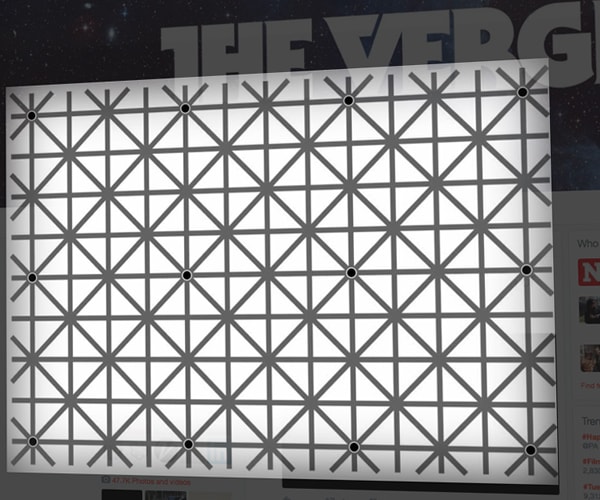Will Kerslake, a game developer, took to Twitter on Sunday to post a confusing picture of intersecting grey lines over a white background. The image was retweeted over 30,000 times as people tried to understand how it worked.
— Will Kerslake (@wkerslake) September 11, 2016 The optical illusion came to prominence in the past few days after it was posted to Facebook this weekend by Japanese psychology professor Akiyoshi Kitaoka. However, the origin of this tricky image is a scientific paper published in the journal Perception in 2000. In the picture, there are actually twelve dots at each intersection. However, your brain will not let you see them all at the same time. As a result, each time you move your eyes, a dot disappears and another appears. “They think, ‘It’s an existential crisis,’” says Derek Arnold, a vision scientist at the University of Queensland in Australia. “How can I ever know what the truth is?” But, he adds, scientists who study the visual system know that perception doesn’t always equal reality. French scientist Jacques Ninio said the illusion has to do with humans having sketchy peripheral vision. “When the white disks in a scintillating grid are reduced in size, and outlined in black, they tend to disappear. One sees only a few of them at a time, in clusters which move erratically on the page,” Mr Ninio explained. “Where they are not seen, the grey alleys seem to be continuous, generating grey crossings that are not actually present. “Some black sparkling can be seen at those crossings where no disk is seen. The illusion also works in reverse contrast.” So, when you are focusing on a single black dot in the centre of your field of view, your brain paints in what it believes is most likely going on around it. And, it assumes that there will simply be more grey lines on a white background, missing out the intermittent black dots, which is why there are no black dots. Source: The Verge
